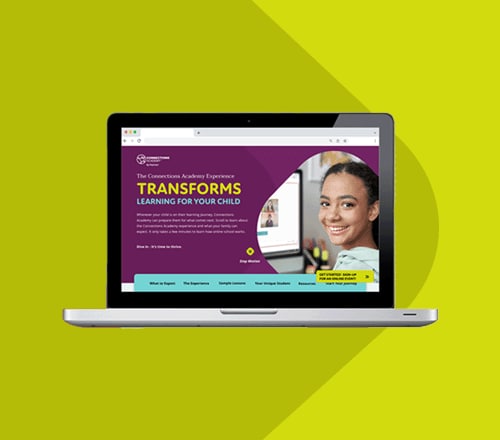A Milk Rainbow Adds a Colorful Swirl to Summer Learning
byBob Engler
4 min to read
The Milk Rainbow Experiment is a colorfully creative way to engage students in basic chemistry concepts that they can immediately connect with the world around them and—just as important—avoid summer learning loss.
Also called the “summer slide” or “summer lag,” summer learning loss refers to the suspected impact on young brains when they go too long without academic stimulation: they forget some of what they learned the previous school year.
Summer vacation is an important, much-needed break from the rigors of school. It is just as important, however, to take time to keep young learners’ brains engaged.
Working through the science of how to make rainbow milk is an ideal way to keep them ready for when classes resume.
One other benefit: It’s an opportunity to take an active role as an education mentor. Research has found that kids who have Learning Coaches perform better in school...
What Is the Science Behind the Magic Rainbow Milk Experiment?
Through the experiment, students will observe how the chemical properties of water, fat, dish detergent, and food coloring interact in a swirl of color. Beyond that, this simple at-home chemistry lesson can spark their imaginations by shedding light on what a real rainbow is and introduce them to the way scientists think when they are looking for answers and solving problems.
What you will need
- Milk (2% or higher fat content)
- Food coloring (one will do; more is better)
- Dish detergent A cotton swab A shallow bowl
- A pan to catch any spills
How to set up the Milk Rainbow Experiment
- How to set up the Milk Rainbow Experiment
- Place the pan on a counter
- Place the bowl on the pan
- Pour the milk in the bowl Add a drop or two of food coloring to the milk
Middle School Science Lesson: How to Make a Milk Rainbow
How Does Milk Rainbow Help Students Think Like Scientists?
Experiments begin with a question. “What will happen if detergent is added to a bowl of milk that has a few drops of food coloring in it?”
Scientists then formulate a hypothesis, a statement that can be tested by experimentation. “If detergent is added to the milk and dye in the bowl, [something] will happen.”
They then conduct an experimental control to ensure nothing affects the results except the variable they want to test, which is the detergent. To control this experiment, dip a dry cotton swab in the milk and food dye.
Experiment and Observe
The experiment is set up. After conducting the control and observing those results, have some science fun.
Put one or two drops of detergent on the dry end of the same cotton swab, dip it in the place as the control (dipping it in a different place would add a variable), and see the science as it happens.
How Do You Explain the Milk Rainbow?
Adding the detergent to the milk and dye causes the chemical properties to interact and then the few drops of dye blossomed into a swirling kaleidoscope.
What is in the Milk?
Milk is a mixture of water, fat, vitamins, and minerals. The water molecules are polar and can dissolve other polar molecules. The fat molecules, however, are non-polar and will not dissolve in water.
What is in the Detergent?
The detergent contains molecules that have both properties. Chemists call the polar “head” of those molecules hydrophilic, or water-loving, and the non-polar “tail” hydrophobic, water-fearing.
What Happens When They Meet?
The hydrophobic (non-polar) ends of the soap molecules collect the non-polar fat molecules in the milk, creating a reaction that produces rainbow milk.
Where Does the Learning Go from Here?
Young learners are naturally inquisitive and ready to connect the science with the world around them. That is a big step toward conceptual understanding and learning growth.
How Does the Science Look in the Real World?
This easy chemistry experiment shows what happens when detergent is added to a mixture that contains fat.
The same thing happens when using soap and water to wash hands: The non-polar end of the soap molecule collects the oil on dirty hands so the water can wash it off. That is why you use soap to get hands clean—water (polar) alone does not dissolve oil (non-polar).
Trying to absorb all these terms and concepts can overwhelm some students, especially young learners. Try these tips to ease them gently out of their comfort zones. Persevering through a learning challenge can build their confidence and problem-solving skills.
What Are the Next Steps?
Take advantage of the Connections Academy® resources, including more science lessons for elementary school; tips for helping middle school students design and build a science fair project; and free Science, Technology, Engineering, and Math (STEM) virtual labs for high school students.
To learn more about the Connection Academy’s tuition-free, accredited, online public-school options, request the free eGuide today.
